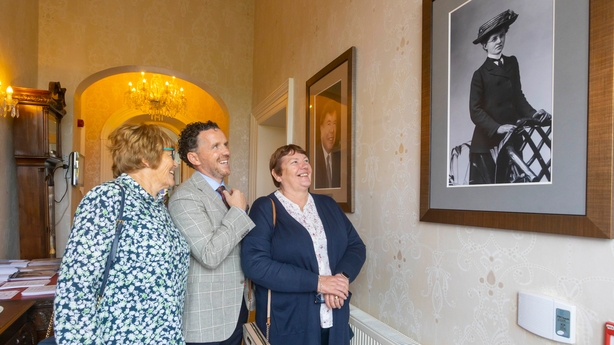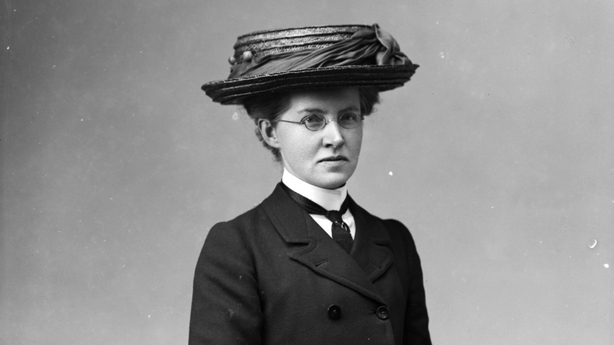The life work of a doctor, champion of public health and campaigner for women's rights has been honoured in Waterford.
The placement of a Waterford Civic Trust Heritage Blue Plaque on the façade of the family home of Dr Mary Strangman is designed to serve as a "significant recognition" of her pioneering medical work and the importance of her legacy.
The unveiling of the plaque took place in conjunction with the annual Alan Howard Memorial lecture today at Carriganore House on South East Technological University’s (SETU) West Campus.
Founder and Director of the Nutrition Research Centre of Ireland, Professor John Nolan, said it marks "a profound moment in history, bridging the legacy of a visionary medical pioneer with the contemporary pursuit of human health" at the Nutrition Research Centre.
"As Dr Strangman's innovative contributions paved the way for a better understanding and delivery of health, our centre’s relentless commitment to advancing nutritional science echoes her mission.
"This plaque symbolises the timeless synergy between the past and present, inspiring us to continue pushing the boundaries of knowledge for the well-being of generations to come," Prof Nolan said.
President of SETU, Veronica Campbell, explained that Dr Strangman’s story began in Carriganore House where she was born in 1872 and over 150 years later, she continues to inspire the scientists who work there today.

"This is the first Waterford Civic Trust Heritage Blue Plaque to be unveiled on an SETU campus and Carriganore House is a very fitting location, connecting Waterford’s past heritage with the future ambition of SETU.
"Today we can reflect on the work of both innovators, Dr Alan Howard and Dr Mary Strangman, and appreciate the significance of their contribution to the heritage of both Waterford and SETU.
"The values they brought to their work such as excellence, collaboration, and equality are also the values on which SETU is built."
Chairman of Waterford Civic Trust, Dr Eugene Broderick, gave an overview of the life and career of Mary Strangman.
She was the sixth of seven children of Thomas Handcock Strangman, gentleman, of Carriganore, and Sarah White Strangman.
In 1891 she and her sister Lucia entered the Royal College of Surgeons Ireland (RCSI), the first medical school to admit women on equal terms with men.
Mary was awarded the fellowship of the RCSI in 1902, and was the second Irishwoman to achieve this distinction.
A year later she set up practice in Parnell Street in Waterford City.
Motivated by her social and suffragist activism, Mary stood for election to Waterford Corporation and became the city's first female councillor on 15 January 1912.
She declared that she would not accept Home Rule if it did not enfranchise women, earning her the wrath of fellow councillors.
Despite indifference and opposition, she continued to advocate for better health services and played a significant role in securing a tuberculosis dispensary in 1916.

In 1920, Mary stood down from the corporation.
Three years later, she was appointed physician at the Waterford County and City Infirmary.
She died on 30 January 1943.
"Throughout her life, Mary Strangman was a champion of public health and women’s rights and a pioneering figure in the medical profession.
"It is my fervent hope that it will serve to remind all those who cross the threshold of this building in pursuit of scientific knowledge that they are continuing in a pioneering tradition that first found expression in the life and career of Mary Strangman.
"May this knowledge inspire them towards excellence in all their endeavours. We are delighted to unveil a plaque in her honour," Dr Broderick said.
Mayor of Waterford City and County, Councillor Joe Conway, highlighted the historical significance of her election to Waterford Corporation in 1912.
"Her presence on the city council challenged the prejudice and obstacles which had consigned women to an inferior role in the civic and political life of Waterford."






